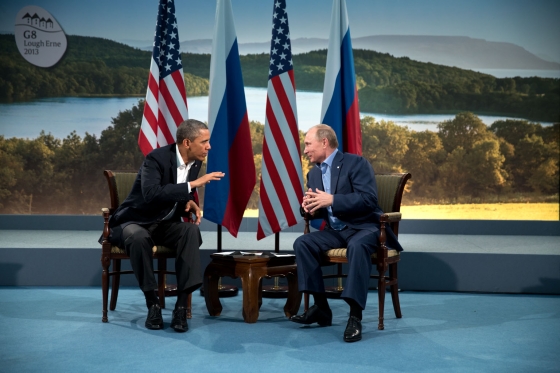
By Jason Patrick
In 1946, American diplomat George Kennan wrote that for the foreseeable future, the United States would need to regard the Soviet Union as a political rival and should expect Moscow to gear its policies toward the disruption and weakening of all rival influence and power. In his famous cable, Kennan described a fiercely dogmatic Communist party that viewed the idea of rival forces—then capitalism and communism—coexisting peacefully anathema. This psychosis fueled perpetual suspicion of the outside world, and fostered a dictatorial regime completely intolerant of any collective human activity that could eventually organize itself into opposition against the Kremlin. When the last remnants of capitalism disappeared from the Soviet landscape, Stalin used the threat of “capitalism abroad” to justify the continuation of “organs of suppression.” He wielded the military and secret police to root out all forms of internal opposition, which, as Kennan pointed out, were merely “agents of foreign forces of reaction antagonistic to Soviet power.”
At its core, Kennan’s famous cable on the psychological underpinnings that motivated Soviet policies rings as true today as it did in the aftermath of the second world war. Although communism ceased to exist under Gorbachev in the 1980s and large portions of Russian wealth reside in commercial centers throughout the West, the same paranoia of organized domestic resistance undermining state authority and foreign adversaries’ encroachment on the Russian periphery drives the Kremlin’s actions today.
President Putin has steadily initiated legislation severely curtailing Internet freedom in Russia. In May, Putin approved the so-called “bloggers law” that requires websites in Russia with greater than 3,000 daily visitors to register with the government. The law eliminates blogger anonymity and will also require search engines and social networks to maintain six-month computer records on Russian soil. The bloggers law follows additional measures allowing the government to block websites, which Moscow has used to silence vociferous critics like Alexei Navalny and Garry Kasparov. In one notable instance of state intimidation, Russian social media site Vkontakte’s owner, Pavel Durov fled the country for fear of recrimination after refusing to provide the government information about activists in Russia and Ukraine.
In his cable, Kennan depicted an all-powerful Communist Party that constituted the “sole repository of truth.” He described how the party tactically manipulated and created “truth” in order to maintain its image of infallibility. To ensure success, the Kremlin relied on the “faithful and unquestioning acceptance” of the party’s dictates. Nearly 70 years later, President Putin leverages a potent propaganda machine to similar effect. He achieves this through consistent control of the narrative that the threatening actions of Western-backed antagonistic governments against Russian-speaking citizens in former Soviet republics like Moldova, Georgia, and eastern Ukraine/Crimea necessitate his intervention. Putin’s conferral of the ‘Order of Service to the Fatherland’ medal to 300 journalists for their faithful adherence to the Kremlin’s narrative of events in Ukraine rings eerily similar to Kennan’s depiction of the Soviet Union of the 1940s.
Just as Joseph Stalin inculcated his citizens with the omnipresent fear of the capitalist enemy lurking perpetually beyond Soviet borders, President Putin emphasizes the European Union’s economic expansion and the broadening of NATO’s borders as an existential threat to the Russian state, its culture, and its very way of life. The Kremlin silenced NATO’s overtures to Kyiv and Tbilisi with the 2008 invasion of Georgia, preserving its buffer along the Black Sea, as well as casting a grim warning to countries such as Azerbaijan who were becoming uncomfortably cozy with Brussels and Washington.
In the present crisis, Putin’s unwavering message to his countrymen highlights Ukraine and Moldova’s plans to enter free trade agreements with the European Union as a violation of their pledged status of neutrality. Putin’s message—whether sincerely felt or nefariously contrived—continues to hold the faithful support of those whom his iron grip on the media and internal opposition leaves behind.
Kennan concluded that Washington was not powerless against the threat of Soviet expansion, highlighting that the United States could present a potent counterweight against the Soviet message by demonstrating to the world that it was a country resolute in its direction and capable of coping with its own domestic issues. He described how a United States comfortable with its responsibilities as a World Power would leave Russian Communism appearing “sterile and quixotic”.
Although Kennan’s description of the psychological factors driving Russian action were as prescient as they were accurate, it would appear that the most studious pupil of the diplomat’s historic cable is, however, President Putin. Going so far as to speak directly to the American public through his 2013 New York Times op-ed about Washington’s propensity for military intervention, while Washington remained gridlocked over the interminable debates on “Obamacare” and the government shutdown, President Putin deftly—if mendaciously—painted America as the impotent chaser of windmills.




